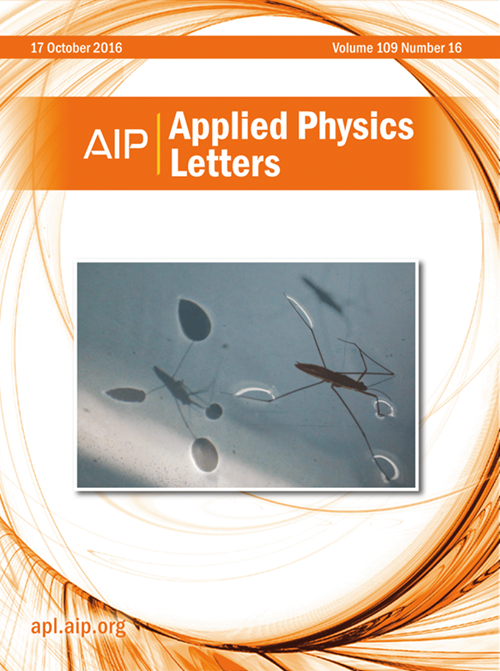The mechanism of degradation and failure in NiO/ β -Ga2O3 heterojunction diodes induced by the high-energy ion irradiation
IF 3.5
2区 物理与天体物理
Q2 PHYSICS, APPLIED
引用次数: 0
Abstract
This work investigated the single-event effects (SEE) of NiO/β-Ga2O3 heterojunction diodes (HJDs) irradiated by 1.86 GeV tantalum ions with linear energy transfer over 80 MeV cm2/mg. The HJDs exhibited radiation responses with the early single-event leakage current (SELC) degradation until the fatal single-event burnout (SEB) failure, which was far below their breakdown voltages. Meanwhile, the surface morphology revealed the SELC damage expressed as burnout of topside NiO and metal stacks, while the SEB damage was observed as a burned hole in the β-Ga2O3 epitaxial layer. According to technology computer aided design simulations, the thicker p-type region in HJDs could further alleviate the electric field crowding effect exacerbated by the heavy-ion strike because of the extension of charge distribution in the p-type region. The SEB threshold was raised to 250 V by thickening the NiO layer to 300 nm. As for the SELC degradation process along with the burnout of topside stacks in HJDs, we supposed the probable reason was the intolerance of NiO to the high electric field under the SEE. This paper analyzed the SEE mechanism in β-Ga2O3 diodes and paved the way for heavy-ion irradiation hardening.高能离子辐照诱导 NiO/ β -Ga2O3 异质结二极管降解和失效的机理
这项工作研究了在 1.86 GeV 钽离子的辐照下,NiO/β-Ga2O3 异质结二极管(HJD)的单次事件效应(SEE),其线性能量转移超过 80 MeV cm2/mg。HJD 的辐照响应表现为早期单次漏电流(SELC)衰减,直至致命的单次烧毁(SEB)失效,而这一衰减远远低于其击穿电压。同时,表面形貌显示 SELC 损坏表现为顶部氧化镍和金属堆的烧毁,而 SEB 损坏则表现为 β-Ga2O3 外延层上的烧毁孔。根据计算机辅助设计模拟技术,HJD 中较厚实的 p 型区可进一步缓解重离子撞击加剧的电场拥挤效应,因为 p 型区的电荷分布得到了扩展。通过将氧化镍层增厚到 300 nm,SEB 阈值被提高到 250 V。至于 HJD 中的 SELC 降解过程和顶部堆栈烧毁,我们认为可能的原因是 NiO 对 SEE 下的高电场不耐受。本文分析了β-Ga2O3 二极管中的 SEE 机制,并为重离子辐照硬化铺平了道路。
本文章由计算机程序翻译,如有差异,请以英文原文为准。
求助全文
约1分钟内获得全文
求助全文
来源期刊

Applied Physics Letters
物理-物理:应用
CiteScore
6.40
自引率
10.00%
发文量
1821
审稿时长
1.6 months
期刊介绍:
Applied Physics Letters (APL) features concise, up-to-date reports on significant new findings in applied physics. Emphasizing rapid dissemination of key data and new physical insights, APL offers prompt publication of new experimental and theoretical papers reporting applications of physics phenomena to all branches of science, engineering, and modern technology.
In addition to regular articles, the journal also publishes invited Fast Track, Perspectives, and in-depth Editorials which report on cutting-edge areas in applied physics.
APL Perspectives are forward-looking invited letters which highlight recent developments or discoveries. Emphasis is placed on very recent developments, potentially disruptive technologies, open questions and possible solutions. They also include a mini-roadmap detailing where the community should direct efforts in order for the phenomena to be viable for application and the challenges associated with meeting that performance threshold. Perspectives are characterized by personal viewpoints and opinions of recognized experts in the field.
Fast Track articles are invited original research articles that report results that are particularly novel and important or provide a significant advancement in an emerging field. Because of the urgency and scientific importance of the work, the peer review process is accelerated. If, during the review process, it becomes apparent that the paper does not meet the Fast Track criterion, it is returned to a normal track.
 求助内容:
求助内容: 应助结果提醒方式:
应助结果提醒方式:


